Polymerase-usage sequencing identifies initiation zones with less bias across S phase in mouse embryonic stem cells
- PMID: 39745849
- PMCID: PMC11879308
- DOI: 10.1093/jb/mvae097
Polymerase-usage sequencing identifies initiation zones with less bias across S phase in mouse embryonic stem cells
Abstract
Various methods have been developed to map replication initiation zones (IZs) genome-wide, often finding far fewer IZs than expected. In particular, IZs corresponding to later stages of S phase are under-represented. Here, we reanalysed IZs with respect to replication timing in mouse ES cells. These datasets identified over five times as many early IZs compared to late IZs. In addition, we have set up a polymerase-usage sequencing (Pu-seq) system in mouse ES cells to map IZs genome-wide. Pu-seq showed less bias towards early IZs, potentially indicating better sensitivity for identifying IZs in late S phase.
Keywords: DNA replication; mouse embryonic stem cells; polymerase-usage sequencing; replication initiation zones; replication timing.
© The Author(s) 2025. Published by Oxford University Press on behalf of the Japanese Biochemical Society.
Figures

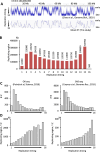
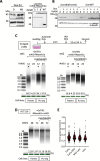
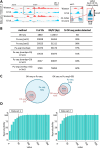
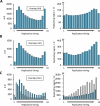
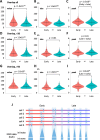
Similar articles
-
High-resolution Repli-Seq defines the temporal choreography of initiation, elongation and termination of replication in mammalian cells.Genome Biol. 2020 Mar 24;21(1):76. doi: 10.1186/s13059-020-01983-8. Genome Biol. 2020. PMID: 32209126 Free PMC article.
-
Transcription shapes DNA replication initiation to preserve genome integrity.Genome Biol. 2021 Jun 9;22(1):176. doi: 10.1186/s13059-021-02390-3. Genome Biol. 2021. PMID: 34108027 Free PMC article.
-
Developmental differences in genome replication program and origin activation.Nucleic Acids Res. 2020 Dec 16;48(22):12751-12777. doi: 10.1093/nar/gkaa1124. Nucleic Acids Res. 2020. PMID: 33264404 Free PMC article.
-
Preserving Genome Integrity During the Early Embryonic DNA Replication Cycles.Genes (Basel). 2019 May 24;10(5):398. doi: 10.3390/genes10050398. Genes (Basel). 2019. PMID: 31137726 Free PMC article. Review.
-
[Replication timing during S phase and GC% distribution of human genome: disease-related genes found in transition regions of replication timing].Tanpakushitsu Kakusan Koso. 2001 Dec;46(16 Suppl):2371-4. Tanpakushitsu Kakusan Koso. 2001. PMID: 11802396 Review. Japanese. No abstract available.
References
-
- Chagin, V.O., Casas-Delucchi, C.S., Reinhart, M., Schermelleh, L., Markaki, Y., Maiser, A., Bolius, J.J., Bensimon, A., Fillies, M., Domaing, P., Rozanov, Y.M., Leonhardt, H., and Cardoso, M.C. (2016) 4D visualization of replication foci in mammalian cells corresponding to individual replicons. Nat. Commun. 7, 11231. - PMC - PubMed
-
- Nakamura, H., Morita, T., and Sato, C. (1986) Structural organizations of replicon domains during DNA synthetic phase in the mammalian nucleus. Exp. Cell Res. 165, 291–297 - PubMed
MeSH terms
Grants and funding
LinkOut - more resources
Full Text Sources

